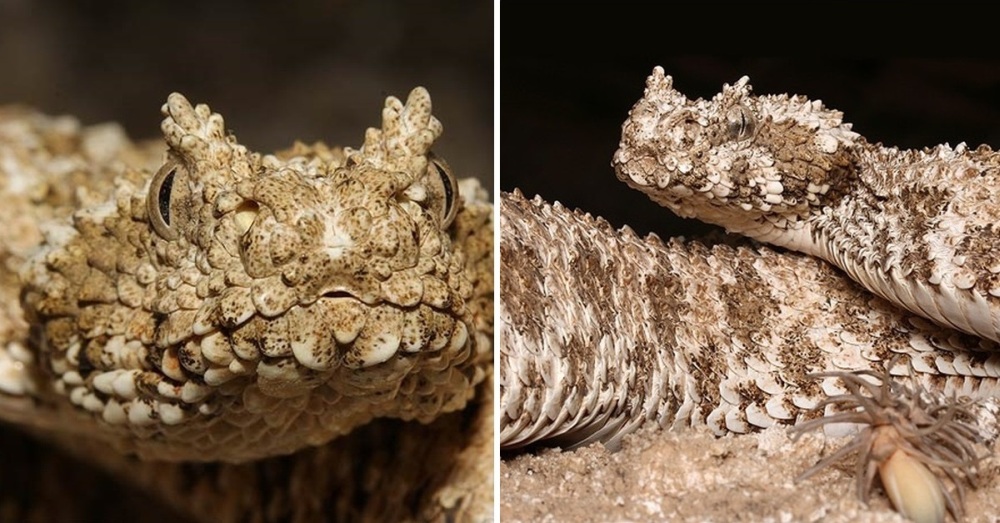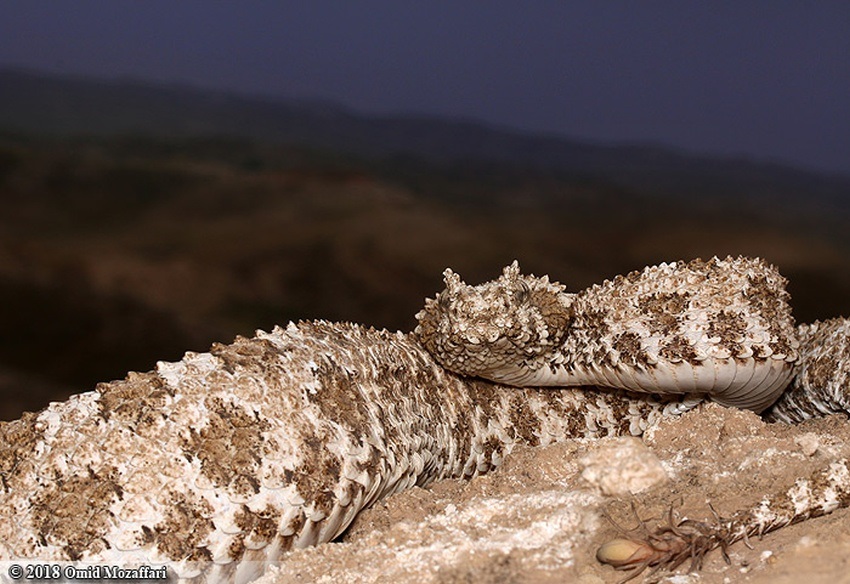A species of horned viper turns hunters into prey by deceiving them with its tail.

This viper takes sneak attacks to a new level. Image credits: Omid Mozaffari
In 1968, scientists observed a horned viper in Iran that had a rather strange feature: its tail ended in an unusual growth, with long scales that resembled spider legs. With only one specimen, however, it was almost impossible to establish if it was truly a new species, or if the knob-like tip on the tail was just a cancerous growth.
A second specimen was only spotted almost 40 years later, in 2003. Although this second specimen was dead and badly preserved, scientists were able to officially describe the viper as a new species in 2006. Since the gut-contents of the newly discovered poisonous viper contained a half-digested bird, scientists speculated that the unique tail served the purpose of attracting prey with the appearance of a spider.

The tip of the viper’s tail can mimic the movements of a spider. Image credit: Omid Mozaffari
While many other species wiggle their tails to trick their prey into coming near them, no other animal has a unique tail tip that looks like an arthropod, giving the spider-tailed viper a top place among the masters of deception. Its skin blends in flawlessly with the colors of the gypsum and limestone rocks in its natural habitat in Iran. And by wiggling the tip of its tail to mimic the movements of a spider, it lures in unsuspecting birds that think what they are going after is an easy meal. But in reality, it’s the perfect trap.
The actual use of the tail was confirmed in 2008, two years after the viper was described. A team of researchers were able to track and capture a spider-tailed viper specimen in Western Iran. It was transported to an enclosure that resembled the area where the vipers usually live. Then, they set up a video camera and released some birds into the cage. Exactly what scientists had anticipated happened: the snake started swooshing its bulb-like tail tip along the ground, giving the illusion of a skittering spider. Many of the birds took the bait: whenever a bird swooped in to peck at the tail of the viper, it swiftly struck and made quick work of the birds.
Interestingly, it has been found that only migratory birds seem to be deceived by the spider-tailed viper’s complex tactic. Maybe local birds know that the sight of an easy prey is too good to be true. But, even if birds aren’t falling for the trick, the snake still has a chance to satisfy its hunger: these vipers are more than comfortable to hunt for arthropods, rodents, and lizards as well.
Even though the spider-tailed viper has no known natural predators, humans pose a serious threat to the species. This rare snake can be found in just a few areas in western Iran, so the Iranian government has taken the firm position not to sell any of the animals. CITES (Convention on International Trade in Endangered Species of Wild Fauna and Flora) has also agreed to add them to Appendix II to restrict international trade and to ensure that it doesn’t threaten the survival of the species. However, due to these restrictions, the animal has likely become the target of poaching, since collectors and zoos are ready to pay high prices for a specimen.

These vipers can only be found in a small part of western Iran. Image credit: Omid Mozaffari
That said, conservation efforts are really important to protect wildlife and preserve it for future generations. It’s crucial that animals, like the spider-tailed viper, don’t become a distant memory, so nature can maintain a healthy ecosystem. So, keep in mind not to disturb the “spiders” if you ever find yourself among the rocky, arid hills of western Iran.

